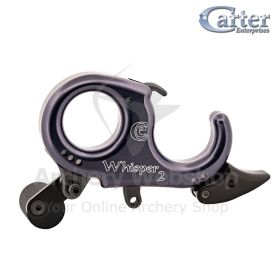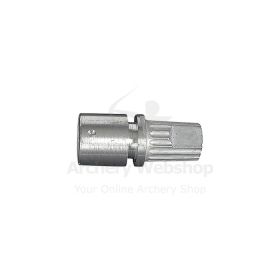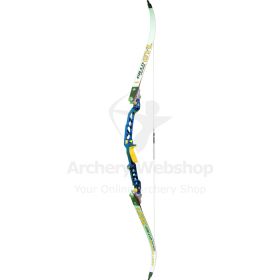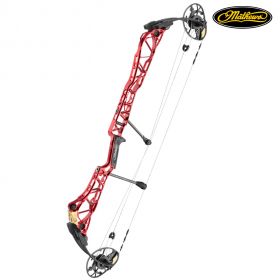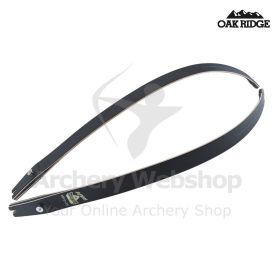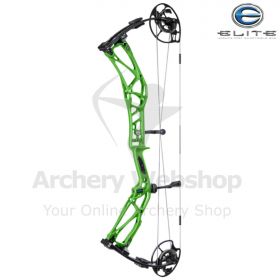Ram Products Machine Arrow Spine Tester
Ram Products Machine Arrow Spine Tester
About the product
Sort your arrows for perfect consistency of spine (dynamic stiffness).
Precisely index arrow nocks to the stiffest portion of the arrow shaft for the tightest groups.
Check the concentricity of your broadheads to an amazing +/-.0005" for an awesome hunting accuracy.
Measure the straightness of arrows from the tip to tip.
Monitor the degradation of arrow spine over the course of the season to catch problems before they show up on your score card.
Provide your customers with a valuable service, the ultimate in arrow accuracy.
Arrow Sorting
Arrow spine within a dozen carbon arrows can vary by as much as .060”, which is the equivalent of shooting eleven 340 spine arrows with one 400 spine arrow of the same weight. Some manufactures are more prone to variation than others, but all brands of arrows can be improved upon with this tool. Arrow sorting is the process of measuring the spine of a large group of arrows and then placing them into smaller groups with consistent spine. This will ensure that all arrows within a group are flexing the same amount during the launch cycle. For this procedure, the Carbon QC should be set up according to figure 1. Note that the bearing mounts are in the outboard position for 28”span or can be moved over to the next set of holes for 26”span. The dial indicator is in the center position. Ensure that the bearing mounts and dial base are securely fastened to the rail. The arrow is then placed under the dial plunger, and resting in the two “vee’s” formed by the four roller bearings. At this point, the dial should be set to zero. This is done by rotating the bezel of the dial indicator until the number zero lines up with the dial pointer. The weight can then be placed in the center of the arrow with one weight hook on either side of the dial indicator. The deflection of the shaft can then be measured and recorded. Depending on the type of arrow being measured, it may be necessary to gently agitate the arrow to ensure that it is repeating to the same point on the dial, and not hanging up on surface imperfections. It is useful to number each arrow and then write down the average spine of the arrow. By checking and recording all of the arrows, it should become evident that some arrows are very stiff and some are very weak. Some archers will start with several dozen arrows and sort them into two or three groups, and other shooters will simply cull out the worst outliers. Both methods will work, but occasionally you will find one or two arrows that are out by so much within a dozen arrows that they must be culled (or given to your competition). It is not possible to give a hard and fast bench mark as to how much deviation is too much. Some manufacturers are able to keep their spine within .010” within a dozen arrows, and some can only hold .060”. Your individual tolerance will be based on the accuracy you desire and your arrow budget.
Nock Indexing
In addition to arrows varying in spine with in a dozen arrows, they also vary around the diameter of the arrows. In other words, it is not uncommon to find an arrow that when looked at from the end we will have .340” deflection at 12:00 and .345” at 3:00, .375” at 6:00 and back to .345” at 9:00. If the arrows are fletched randomly without taking this into consideration, the arrows will flex differently on the launch cycle and thus impact at different points on the target. Conversely if the nock is indexed to a consistent point in relation to the rotation spine variation, each arrow will leave the bow flexing identically to the other arrows in the group. The results will be evident on the target. This is even more pronounced with broadhead equipped arrows because of the steering effect of the exposed blades. Figure 2 Indexing nocks is accomplished by placing the bearing mounts in the outboard position and the dial indicator in the center most position. The arrow with the nock installed is then placed under the dial plunger in the vee’s formed by the bearings. The weight can now be placed on the arrow with a weight hook on either side of the dial plunger The arrow can now be rotated by turning the arrow on the bearings with your fingers. Use caution because you can push the arrow down as you rotate it and cause a false reading. This method is something that you will develop a feel for the more you use the tester. Depending on the manufacturer of the arrow, you should see a sharp deviation either up or down in arrow deflection at some point in the rotation. This is what we refer to as the actual spine point of the arrow. Rotate the arrow until the dial peaks on the spine point. At this point mark the peak with a felt pin. The Nock Alignment tool can now be installed and the nock can be indexed. (The Nock Alignment tool can be left in place as you mark your arrows as long as you don’t “rub” the arrows on it as you rotate them) The Nock Alignment tool should be installed according to Figure 2. The portion with the level pointing in towards the arrow. The Nock Alignment tool is adjusted by loosening the 10-32 set screw on the bearing mount and sliding the rods in or out. For this procedure, it should be adjusted so that the face of the Nock Alignment tool is approximately one inch from the bearings on the bearing mount (if you are indexing arrows that are fletched make sure the bearing area is free from glue or fletch interference). 5 To align nocks slide the arrow into the Nock Alignment tool so that the nock groove snaps onto the pin inside of the Nock Alignment Tool. Firmly grasp the arrow and the knob on the Nock Alignment tool and rotate the knob, and therefore the nock, until the bubble is between the two lines on the level and the felt pin mark is up. We generally pull the arrow out of the nock alignment tool and do a couple of more rotations to ensure that we have chosen the peak of the arrow spine point. Repeat this on the rest of the arrows in the group paying special attention to make sure that you index each arrow to the high or the low spine point. We have not found a significant advantage between indexing to the high point or the low point, as long as all arrows are indexed identically.
Broadhead Alignment
By following the previously stated procedures, you should have a batch of arrows that group very tightly with field tip points. If you are setting up hunting arrows with a fixed blade broadhead, the final key to phenomenal accuracy is a properly aligned broadheads. Because of the steering effect of fixed blades, it is of paramount importance that the broadhead is concentric with the shaft. Traditionally, this has been done by a variety of methods, such as spinning on a hard surface or spinning the arrow in a vee and eyeballing how it lines up with a dot on a stationary surface. All of these methods rely on the user to eyeball the results and make a judgment. We have included a method of quantifying broadhead run out. This is done by setting up the Carbon QC according to Figure 3. The indicator plunger will be near the end of the pin. 6 The arrow is placed in the vee’s and then slid forward so that the broadhead firmly registers in the hole in the end of the pin that is sticking out of the grooved knob. By rotating the arrow, the dial on the indicator should rise and fall according to the runout of the broadhead. A nonconcentric broadhead can be fixed many times by unscrewing it and re-installing it. Sometime it can be fixed by replacing the O-ring or washer that is between the broadhead and insert. On arrows that were put together with hot melt glue it may be possible to heat up the point to melt the glue and push on broadhead ferrule until it runs true. When all else fails there are several tools on the market that true the face of the insert, and should improve any runout that was caused by non-concentric inserts. It is always possible that the runout is caused by an imperfectly machined broadhead, in which case it is usually necessary to try a different broadhead to ensure accurate flying hunting arrow.
Spine Degradation
Arrow spine will degrade with repeated use. The amount of degradation depends on the type of arrow, the type of target, and the amount of flexing that the arrow experiences. How many shots and what type of arrow is the worst offender, it is a subject best left to individual experimentation and arguments around the campfire. The degradation of spine is something that should be monitored before it shows up on your score card. Fortunately, it is easy to see with the Carbon QC. It almost always shows up as a remarkable weak spine point rotationally around the arrow. It is not uncommon to see a soft spot of .040” on an aluminum arrow that has been shot into a cardboard or a similar hard backstop for any length of time. There is generally no recourse for such an arrow except culling the arrow.
Arrow Straightness
Arrow straightness can be easily checked by using the Carbon QC. The setup for checking straightness depends on the portion of the arrow being checked. For instance, checking the straightness in the nock and point area (the most critical regions) requires the bearing mounts to be placed approximately 10 inches apart with the dial indicator base in the adjacent position. Checking the center portion of the shaft is best accomplished by placing the bearing mounts about ten inches apart with the dial indicator at the midpoint between the two bearing mounts. Generally, a more accurate reading can be found by keeping the bearing mounts close together to minimize any deflection caused by gravity and the pressure of the dial indicator.
Archery Tech Team
- Productnumber: 108895
- Packaging quantity: 1
- Stock Status: Check Before Ordering
- Brand: RAM products
Ram Products Machine Arrow Spine Tester Arrows Arrow Building Spine Testers & Straightening CQC
- Height: 16.00 cm
- Width: 17.00 cm
- Length: 33.00 cm


